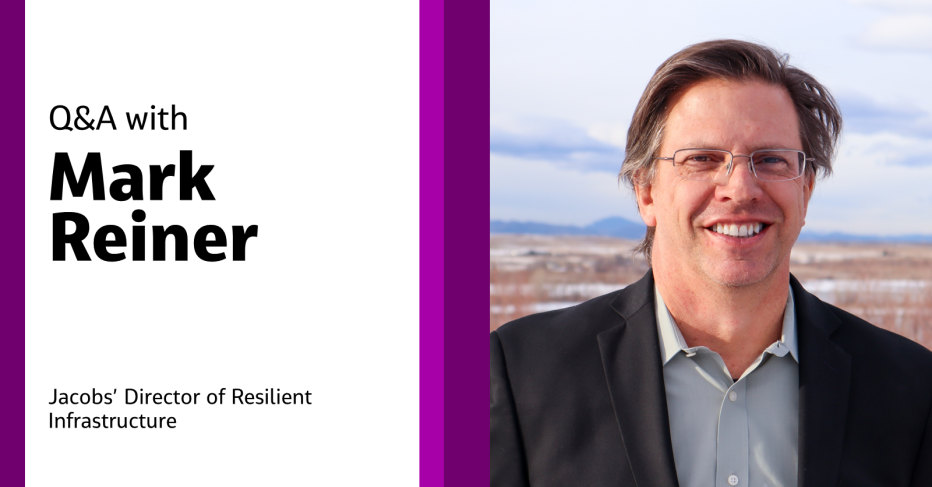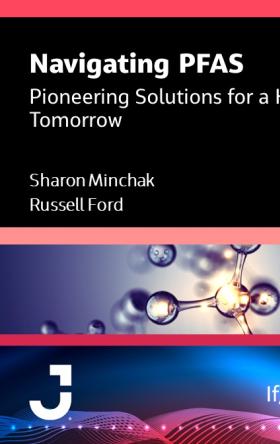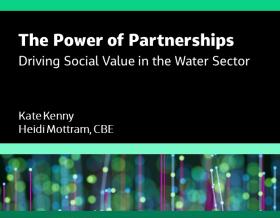
In this feature, Jacobs’ Director of Resilient Infrastructure Mark Reiner gives insight into our aging infrastructure solution, Kaleidoscope, the importance of thinking broadly when developing solutions and the ‘A’ in STEAM.
Mark, your background and education is in geology and civil engineering. How did that lead you down the path to look for ways to help address aging infrastructure?
As a civil engineer I saw how infrastructure is traditionally placed below ground, and as a geologist, I know how corrosive some soils are. Differential settlement of soils is inevitable, and it places unanticipated strains on our infrastructure. It wasn’t until my Ph.D. program that I started to investigate why we need to understand almost all of an existing system before we add new assets and call the system resilient or sustainable. I wondered about connecting new, modern infrastructure to the older systems a city uses and how to maintain it if it’s buried underground. You can’t have only one link of the chain be shiny and new and call the whole chain resilient and sustainable; a system is only as strong as its weakest link.
Jacobs has invested in your aging infrastructure solution, Kaleidoscope. What made Jacobs and Kaleidoscope a good fit?
The team at Jacobs has the brain power and deep domain expertise to help Kaleidoscope bring light to infrastructure vulnerabilities; especially where they express themselves as a hazard. Also, Jacobs can help transform Kaleidoscope from being a tool to identify problems to being a solution because of the Jacobs team’s knowledge in a wide range of disciplines - like urban planning, utility policy, infrastructure costs and community and stakeholder engagement. Because Kaleidoscope helps cities look at modern utility asset management in a different way, it’s a great match for Jacobs’ commitment to and culture of innovation.
Mark, give us a layperson’s view of what Kaleidoscope is and what it does.
In a nutshell, Kaleidoscope allows urban planners and city decision-makers to better communicate the status of all infrastructure assets – even those you can’t see – to a community that relies on these assets to live their daily lives.
For example, an engineering firm was asked to provide safety ratings for the bridges in a town. Because Kaleidoscope looks at all infrastructure, we predicted a failure for a bridge that the engineering firm had given an excellent rating because there was an aging water main was embedded in the bridge. About three months after the bridge had been given that excellent rating, the 110-year-old water main broke, and the bridge couldn’t be used until it was repaired.
You are one of the co-founders and developers of our Kaleidoscope technology. How did the idea come about?
I first read the U.S. had an aging infrastructure crisis in the 2013 American Society of Civil Engineers Report Card. I, like everyone else, assumed engineers were only held back by a lack of funding. But over the course of a few years, I began to think that more systemic issues might be involved than simply a lack of funding. I started thinking from a city’s perspective of aging infrastructure or quantifying how a city’s vitality and viability could be impacted.
Who can benefit by using Kaleidoscope, and what gap is it filling in the market?
Starting from the top down, Kaleidoscope is for any entity that depends on infrastructure for viability, such as a military installation or a campus, and of course, a city. We believe urban planners, resilience planners, city managers, emergency management personnel and others can use Kaleidoscope to better understand existing infrastructure vulnerabilities and engage with the public in a transparent way to drive capital expenditure projects that have lower lifecycle cost analyses.
There really hasn’t been a systematic inclusion of how we discuss aging infrastructure in urban resilience. We tend to discuss one sector at a time, such as transportation or water, but we don’t discuss how we should manage areas in a city that are chronically disrupted by closures because of infrastructure repair and maintenance and whether these areas are actually classified as hazards. Adding aging infrastructure to the Federal Emergency Management Agency’s hazard mitigation planning could be complementary, but currently FEMA’s planning doesn’t include aging infrastructure as a hazard – only natural, manmade and technological hazards are included.
How is Kaleidoscope part of Jacobs’ broader solution to urban resilience?
A broader solution requires engagement with a city’s senior staff – and the public – to evaluate items such as geodesign, improving urban resilience and negotiating through utility policy and franchise agreements to achieve a multi-stakeholder solution. Kaleidoscope is one more piece of the puzzle that helps initiate broader solution discussions.
From your vantage point, does Kaleidoscope only identify a problem, or does it point toward solutions?
Well, both. Typically, a city will have dozens to hundreds of “problems”! Kaleidoscope essentially ranks each problem’s intensity, then, using existing data, we’re able to further classify how each problem could impact things such as commuting and commerce and whether the location is a historical site. We can also have a discussion around the area’s demographics, which is really important, because if you want to move toward a solution, the community has to support it. Part of arriving at a solution involves communicating in a clear, concise and logical way.
The year 2020 brought the world unprecedented challenges to overcome. Looking through this new lens of a post-pandemic world, how can a tool such as Kaleidoscope help communities overcome new resiliency challenges?
Many discussions are happening around the post-pandemic streetscape, which is part of the complete streets discussion. When a city/community wants to make a long-term change to the urban road, we need to consider the underlying infrastructure as part of the total design. This could include fully separating the need to cut open roads to access buried infrastructure by using utilidors and rebuilding with “forever pavements” that are pothole resistant. It could further include smart city sensors that may provide a return on investment if a road isn’t constantly being cut open.
What advice would you give to high school students or others who are interested in a career in STEAM?
Focus on the “A” in STEAM. We can’t separate creativity from science. While it is absolutely necessary for engineers to be precise and accurate, that doesn’t exclude the need to be creative. After all, we can’t continue to do the same things and expect different outcomes.
What would people be surprised to know about you?
I’ve built thin-shelled concrete bamboo kitchens for orphanages in Rwanda, worked on colloidal, silver-lined ceramic water filters in Mexico, helped bring low-energy-technology wastewater treatment for the United Nations Peacekeepers in Haiti, co-lead the Kigali, Rwanda masterplan for sustainable infrastructure and led a paper on sustainable infrastructure for Indian cities.
What do you enjoy most about being part of the #OurJacobs family?
The brains here.
Join #OurJacobs team
What drives you drives us as we work to build a better world – together. At Jacobs, every day is an opportunity to make the world better, more connected, more sustainable.
We’re always looking for dynamic and engaged people to join our team. Bring your passion, your ingenuity and your vision.Let’s see the impact we can create, together.

















































